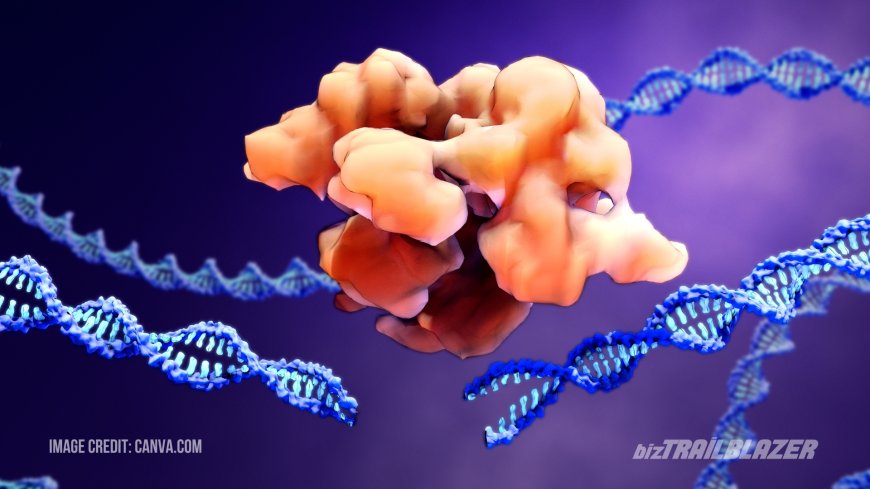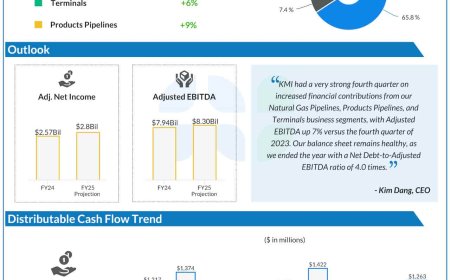CRISPR-Cas9 101: Can You Really Edit Your Own Genes?
Think about a world where you could cut off a gene accountable for an illness by replacing it with a healthy one. This is not a figment of imagination, but rather what CRISPR-Cas9 holds out as a potential remedy—the disruptive gene-editing innovation that has sent shockwaves across the scientific community. Nonetheless, before you fancy yourself as a wielder of genetic editing tools, let us explore CRISPR in depth and tackle its potential and ethical and technical obstacles. What is Gene Editing? Gene editing or genome editing refers to various technologies scientists use to change an organism’s DNA. It can entail inserting, deleting, or altering specific parts of the DNA sequence. In the past, gene-editing techniques have been difficult, time-consuming, and error-prone. However, CRISPR-Cas9 has emerged as a powerful and highly precise technology enabling new frontiers. How Does CRISPR-Cas9 Gene Editing Work? The term CRISPR stands for Clustered Regularly Interspaced Short Palindromic Repeats which is taken from only part of bacteria’s immune system; while CAS9 serves as the molecular scissors enzyme. This process can be broken down into: Guide RNA Design: A certain guide RNA molecule is developed by scientists whose main objective at recognizing the target sequence on DNA. Cas9 & Guide RNA Complex: Cas9 protein comes together with guide RNA to form ribonucleoprotein (RNP) complex. Target Recognition: The guide RNA guides the Cas9 complex to a particular location on DNA that needs to be edited. DNA Cleavage: Just like molecular scissors, Cas9 cuts precisely at the site targeted on DNA Cellular Repair Mechanisms: The cell’s natural repair machinery takes over after breaking occurs offering two alternatives: Non-homologous end joining (NHEJ): This is a quick but error-prone repair process, and it can sometimes lead to random mutations. Homology-directed repair (HDR): If there is a healthy DNA template available, this type of response might be used to fix the break with better accuracy. Scientists can achieve various gene editing objectives by manipulating the guide RNA and repair mechanisms with care, inserting new genes, knocking out unwanted ones, or correcting mutations that result in diseases. CRISPR-Cas9 – A Boon and a Challenge that Utilizes Cellular Machinery The fact that CRISPR-Cas9 can tap into cellular repair machinery is one of its major strengths. Unlike earlier gene-editing techniques, this makes it more adaptable and potentially less dangerous. Nevertheless, the reliance on cell machinery also presents a challenge. The faster repair process known as NHEJ can result in unintended mutations hence leading to worries about off-target effects. This has led to ongoing studies by scientists aimed at reducing these risks and ensuring precise gene editing. CRISPR-Cas9 – A Sneak Preview of Medicine in the Future There are many great possibilities concerning the use of CRISPR-Cas9 in medication and it looks very bright for eradication of several genetic illnesses. These include: Healing Genetic Disorders: There are examples where CRISPR could be employed to correct specific gene mutations causing diseases such as cystic fibrosis, sickle cell anemia, or Tay-Sachs disease. Cancer Treatment: Through altering a patient’s immune cells or changing genes responsible for cancer within tumors using CRISPR. Gene Therapy: Using CRISPR, functional copies of genes can be delivered to patients with genetic deficiencies. A recent study published in Nature demonstrated the potential of CRISPR to treat beta-thalassemia, a blood disorder caused by mutations in the beta-globin gene. Researchers successfully used CRISPR to correct the mutation in human blood stem cells, paving the way for potential clinical trials. However, it is necessary to note that more research and development must be done before CRISPR-Cas9 therapies become widespread. Ethical Considerations and the Way Forward Germline Editing: Modifying genes in sperm or egg cells would cause changes that are inheritable. The potential unforeseen consequences and ethical dilemmas of germline editing are an ongoing issue being discussed. Off-Target Effects: As earlier mentioned, NHEJ repair mechanisms could unintentionally introduce mutations at other sites besides the target site. The importance of minimizing these off-target effects is very important for ensuring the safety and efficacy of CRISPR therapies. Equity and Access: CRISPR-Cas9 technology is expensive and requires expertise. Making sure everyone gets access to this technology regardless of their status is a challenge. Can You Really Edit Your Own Genes? The Reality of DIY Gene Editing CRISPR gene editing technology is currently not suitable for do-it-yourself (DIY) gene modification. There are difficult barriers to overcome before it can be considered safe and accessible for use by individuals. Here’s why: The Complexity of the Procedure: CRISPR editing needs highly developed methods and particular know-ho

Think about a world where you could cut off a gene accountable for an illness by replacing it with a healthy one. This is not a figment of imagination, but rather what CRISPR-Cas9 holds out as a potential remedy—the disruptive gene-editing innovation that has sent shockwaves across the scientific community. Nonetheless, before you fancy yourself as a wielder of genetic editing tools, let us explore CRISPR in depth and tackle its potential and ethical and technical obstacles.
What is Gene Editing?
Gene editing or genome editing refers to various technologies scientists use to change an organism’s DNA. It can entail inserting, deleting, or altering specific parts of the DNA sequence. In the past, gene-editing techniques have been difficult, time-consuming, and error-prone. However, CRISPR-Cas9 has emerged as a powerful and highly precise technology enabling new frontiers.
How Does CRISPR-Cas9 Gene Editing Work?
The term CRISPR stands for Clustered Regularly Interspaced Short Palindromic Repeats which is taken from only part of bacteria’s immune system; while CAS9 serves as the molecular scissors enzyme. This process can be broken down into:
- Guide RNA Design: A certain guide RNA molecule is developed by scientists whose main objective at recognizing the target sequence on DNA.
- Cas9 & Guide RNA Complex: Cas9 protein comes together with guide RNA to form ribonucleoprotein (RNP) complex.
- Target Recognition: The guide RNA guides the Cas9 complex to a particular location on DNA that needs to be edited.
- DNA Cleavage: Just like molecular scissors, Cas9 cuts precisely at the site targeted on DNA
- Cellular Repair Mechanisms: The cell’s natural repair machinery takes over after breaking occurs offering two alternatives:
- Non-homologous end joining (NHEJ): This is a quick but error-prone repair process, and it can sometimes lead to random mutations.
- Homology-directed repair (HDR): If there is a healthy DNA template available, this type of response might be used to fix the break with better accuracy.
Scientists can achieve various gene editing objectives by manipulating the guide RNA and repair mechanisms with care, inserting new genes, knocking out unwanted ones, or correcting mutations that result in diseases.
CRISPR-Cas9 – A Boon and a Challenge that Utilizes Cellular Machinery
The fact that CRISPR-Cas9 can tap into cellular repair machinery is one of its major strengths. Unlike earlier gene-editing techniques, this makes it more adaptable and potentially less dangerous. Nevertheless, the reliance on cell machinery also presents a challenge. The faster repair process known as NHEJ can result in unintended mutations hence leading to worries about off-target effects. This has led to ongoing studies by scientists aimed at reducing these risks and ensuring precise gene editing.
CRISPR-Cas9 – A Sneak Preview of Medicine in the Future
There are many great possibilities concerning the use of CRISPR-Cas9 in medication and it looks very bright for eradication of several genetic illnesses. These include:
- Healing Genetic Disorders: There are examples where CRISPR could be employed to correct specific gene mutations causing diseases such as cystic fibrosis, sickle cell anemia, or Tay-Sachs disease.
- Cancer Treatment: Through altering a patient’s immune cells or changing genes responsible for cancer within tumors using CRISPR.
- Gene Therapy: Using CRISPR, functional copies of genes can be delivered to patients with genetic deficiencies.
A recent study published in Nature demonstrated the potential of CRISPR to treat beta-thalassemia, a blood disorder caused by mutations in the beta-globin gene. Researchers successfully used CRISPR to correct the mutation in human blood stem cells, paving the way for potential clinical trials.
However, it is necessary to note that more research and development must be done before CRISPR-Cas9 therapies become widespread.
Ethical Considerations and the Way Forward
- Germline Editing: Modifying genes in sperm or egg cells would cause changes that are inheritable. The potential unforeseen consequences and ethical dilemmas of germline editing are an ongoing issue being discussed.
- Off-Target Effects: As earlier mentioned, NHEJ repair mechanisms could unintentionally introduce mutations at other sites besides the target site. The importance of minimizing these off-target effects is very important for ensuring the safety and efficacy of CRISPR therapies.
- Equity and Access: CRISPR-Cas9 technology is expensive and requires expertise. Making sure everyone gets access to this technology regardless of their status is a challenge.
Can You Really Edit Your Own Genes? The Reality of DIY Gene Editing
CRISPR gene editing technology is currently not suitable for do-it-yourself (DIY) gene modification. There are difficult barriers to overcome before it can be considered safe and accessible for use by individuals. Here’s why:
- The Complexity of the Procedure: CRISPR editing needs highly developed methods and particular know-how in designing guide RNAs, delivering them into target cells, and achieving precise editing. So far there is no sufficient knowledge about these approaches in relation to DIY.
- Safety Concerns: For DIY applications, the risks that come along with off-target effects and unintended consequences are too high. Errors in gene editing can lead to grave health outcomes.
- Regulatory Landscape: The rules regulating gene editing are still incomplete. Gene-editing applications have stringent regulations that would unlikely permit any such DIY attempts.
Conclusion
A revolutionary tool, CRISPR-Cas9 may change medicine completely and our comprehension of genetics. Although significant research and ethical concerns still exist, the possibility of presently incurable diseases being treated or even cured through CRISPR is without doubt. However, this technology can become more refined with time, safe issues addressed, and solid ethical frameworks established such that someday; CRISPR-Cas9 will allow us to not only edit our genes but also improve human health outcomes. Nonetheless, gene editing is promising for the future but it involves blending scientific rigor with ethical responsibility as well as a sense of caution as we forge ahead.
Inspiration Points
– Xu, L., et al. (2023). CRISPR-mediated HbA production in human hematopoietic stem/progenitor cells for β-thalassemia gene therapy: https://www.ncbi.nlm.nih.gov/pmc/articles/PMC7488347
– Ethical Considerations of CRISPR Gene Editing: https://www.nih.gov/about-nih/what-we-do/nih-turning-discovery-into-health/transformative-technologies/crispr-revolution
– CRISPR-Cas9 for Cancer Therapy: https://www.nature.com/collections/hifiigbabf
– CRISPR Gene Editing: Applications, Limitations, and Implications for the Future: https://www.frontiersin.org/journals/oncology/articles/10.3389/fonc.2020.01387/full
































![Inside Smith Johnson Law PLLC [Florida’s Trusted Defense Firm] – A Chat with Criminal Defense Expert](https://hot166.com/uploads/images/202412/image_430x256_675ee09f1b5c8.jpg)










